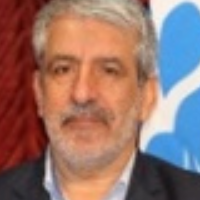Discourse Analysis of the Tenth Letter of Nahj al-Balagha Based on Norman Fairclough’s Pattern
Critical discourse analysis, as a modern interdisciplinary approach, attempts to read the text beyond words, sentences, and the text itself. It deems the context necessary to understand the semantics of a text from a critical point of view. Its aim is to clarify the structures of power, domination, and political, social, and cultural inequalities. These structures are criticized through rhetoric, syntax, pragmatics, and intertextuality. This paper adopts a descriptive-analytical method to examine the tenth letter of Nahj al-Balagha,which is addressed to Muawiyah, based on Norman Fairclough’s critical discourse pattern. This model, theorized in the book Language and Power, redefines asymmetrical social relations. It considers three layers for discourse analysis: description, interpretation, and explanation. In Fairclough’s opinion, the social action is shaped by the interaction of these layers. This essay, on the layer of description, studies the text from a formalistic point of view. On the layer of interpretation, it deals with the interaction of text and its context, and explores the elements of power and ideology. It is noteworthy that these elements are reflected in the use of pronouns. The pronoun I, for instance, indicates professional and social responsibility while the pronoun you indicates the differences between Imam Ali’s personality and that of his counterparts, namely the Umayyads. The letter mentions the same motives that troubled the Islamic society from the first battle to the Battle of Siffin. Critical discourse analysis reveals the ideological differences between Imam Ali and the Umayyads reflected in its use of elements such as metaphors and pronouns. Furthermore, the article tries to demonstrate that in this letter, the purpose of Imam Ali as the religious and legitimate ruler of the Islamic world was to disrupt the domination and inequality in the structure of tribalism of the Umayyad Caliphate, for otherwise Muslims would face grave difficulties.
-
The Irony of Fakhr Razi's Complaining Style to Sheikh Abdul Qahir Jurjani in the Subject of Metonymy (Emphasizing Intellectual Implication)
Elham Baboli Bahmeh, Mohammadebrahim Khalifeh Shoshtari*, , Ali Najafi Ivaki
Iranian Association of Arabic Language and Literature, -
Analysis of semantic domains of words in the Holy Qur'an, a case study Surah Al-Waki’ah
Mina Azimifar, Abbas Eghbaly *, Rohollah Saiiady Nezhad
Journal Linguistic Research in the Holy Quran, Spring-Summer 2024



